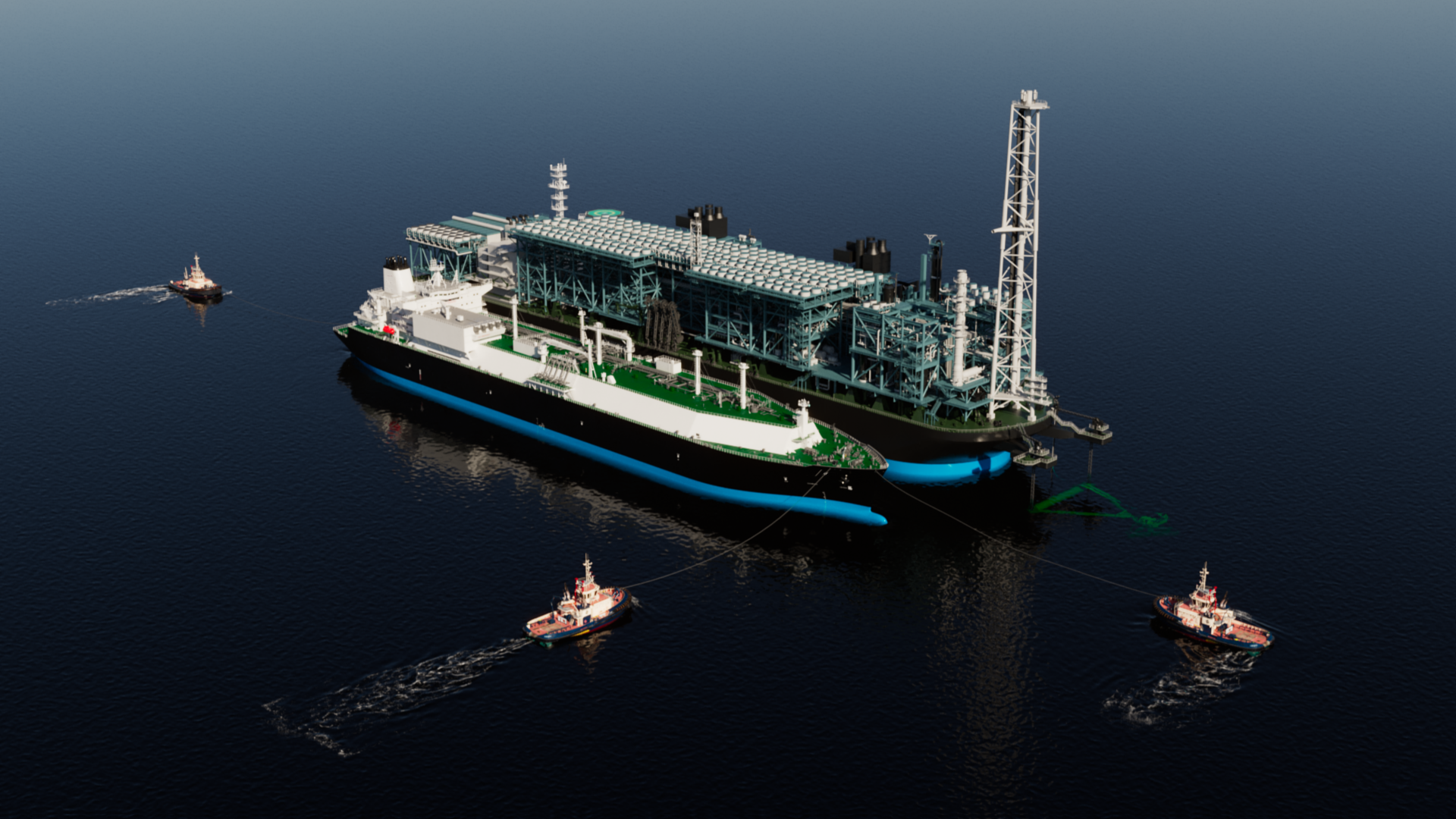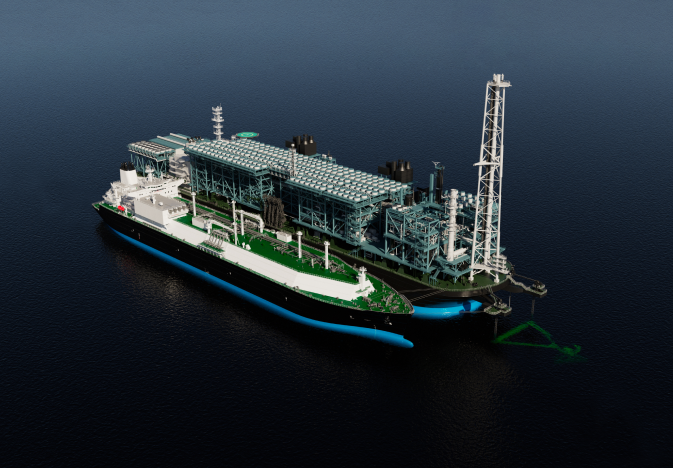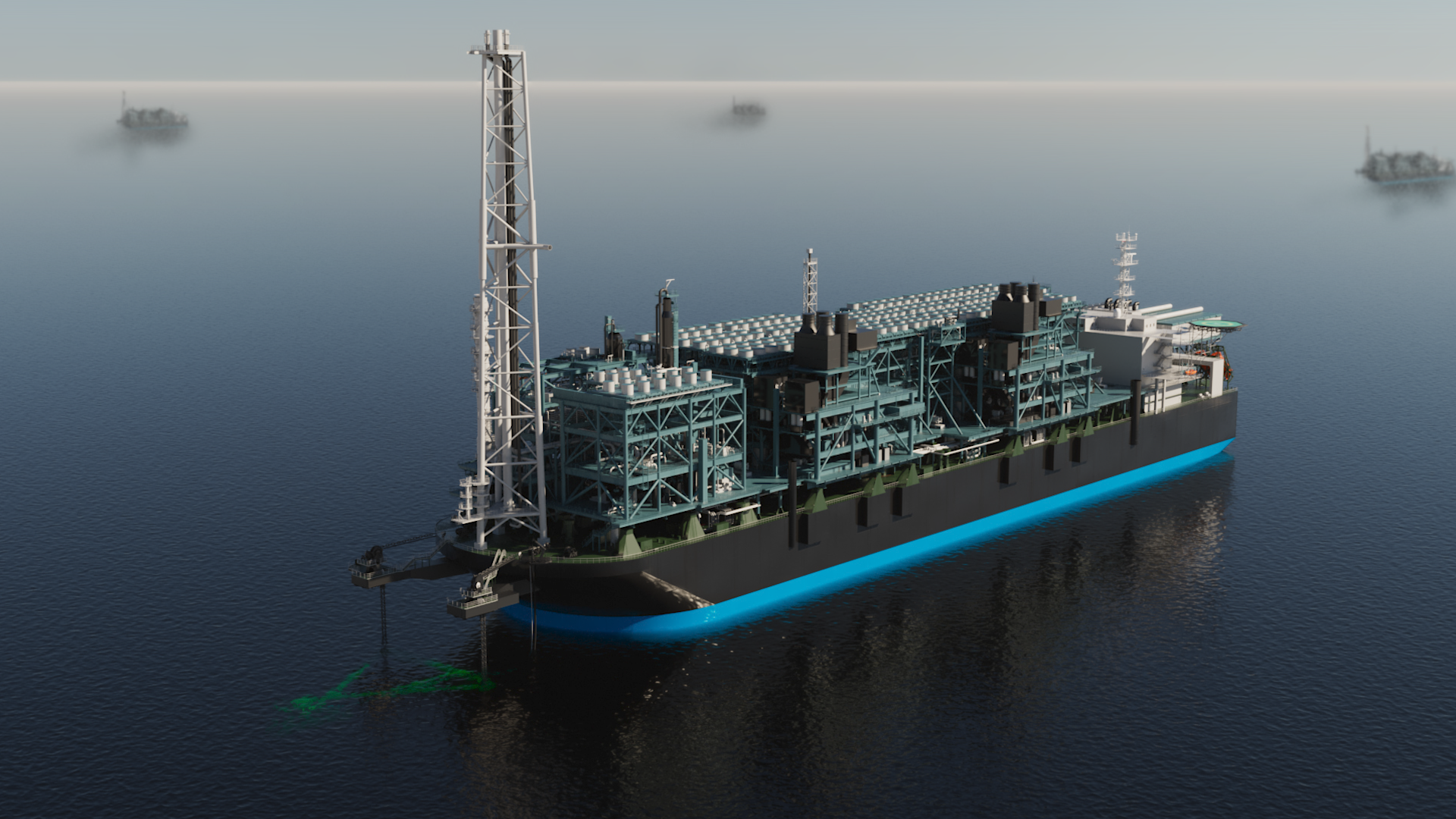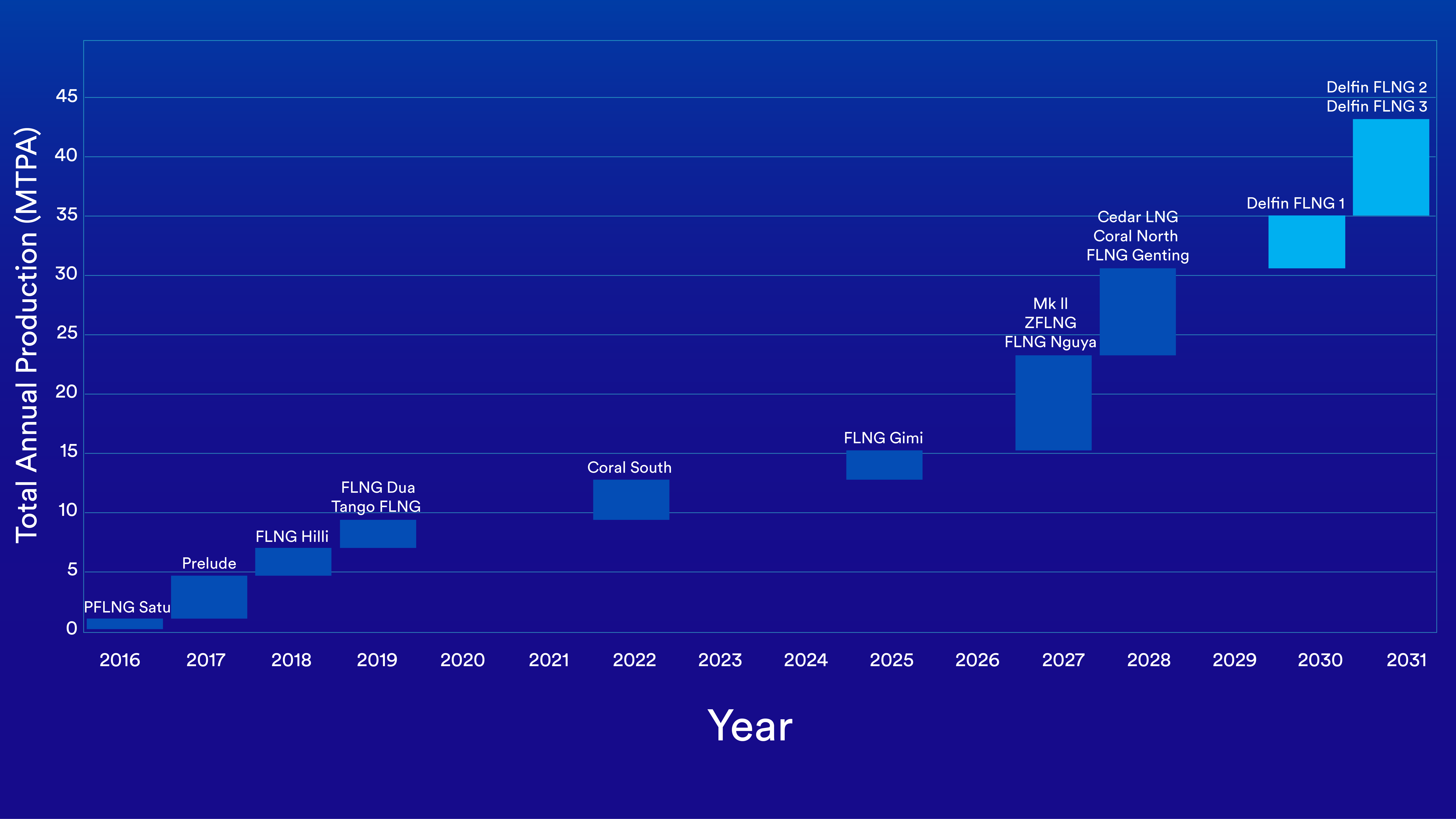Delfin has cooperated with Samsung Heavy Industries and Black&Veatch for the design and engineering of the newbuild FLNG Vessels.
The parties successfully completed a FEED study and subsequent rounds of post-FEED optimization work. In parallel the partners have been developing a Lump-Sum, Turnkey Engineering, Procurement, Construction & Integration contract for the construction and completion of the FLNG Vessels.
The Delfin Newbuild FLNG Vessel uses gas turbine driven technology and air-cooling for both liquefaction, process and utility cooling duties. The FLNG design is a liquefier concept that receives “pipeline quality feedgas” and is therefore not producing from a reservoir like an “LNG FPSO”. As such the design is significantly less complex and lower in costs.
The company has developed the FLNG Vessels by applying Best Available Technology (BAT) in compliance with the Record Of Decision and the Deepwater Port Act to reduce emissions and effluents. As a result, Delfin has diligently assessed, developed and implemented novel technologies to improve the performance of the FLNGVs such that the environmental impacts and footprint are prevented or minimized concurrently with improvements in the production, safety and/or economic performance. The strict adherence to the application of BAT has enabled Delfin to improve the FLNGV design such that the original plan to build and operate four FLNGVs is voluntarily reduced to three FLNGVs. Or, to put it in simple terms: the Project can do the same job but with only three vessels. Needless-to-say this illustrates a significant reduction in the environmental footprint.
e-FLNG
The Company has also developed with Black & Veatch and SHI an electric-drive FLNG solution that can be used in locations where renewable electric power is available to reduce emissions from the LNG facility. This e-FLNG was developed as a ‘derivative’ of the Delfin FLNG design, which demonstrate the generic versatility of a Liquefier FLNG. That design formed the basis for the Cedar LNG project, currently under construction at Samsung shipyard.
- The deepwater port comprises the subsea pipeline connection and mooring system for hook-up of the FLNGV
- The Port Delfin LNG Project will be licensed, constructed and operated under the Deep Water Port Act of 1974 (DWPA) under the jurisdiction of MARAD and the USCG
- The FLNG Vessel is an integrated berth for the visiting LNG carrier
- LNG carriers will be assisted by tugs and the FLNGV will have thrusters for heading control
- Mooring Masters will assist the LNGC captains to conduct the approach and berthing maneuvering
- Side-by-Side LNG loading operations is a well-established practice with several thousands performed between LNGC/FSRU and LNGC/FLNG
- Being offshore the LNG carriers can swiftly position and tender Notice-Of-Readiness before being escorted by dedicated tugs to berth along an FLNGV. Time and costs for pilotage and channel navigation congestion and delays is avoided and the collision risk is absolutely minimal
- The FLNG Vessel and its mooring system are designed for the worst (Winter) storms which may occur on the site
- Should a tropical storm or hurricane approach the site or otherwise be expected to have a severe impact on the site, the FLNGV will disconnect and sail away and bring the facility to a calm offshore location. Upon return the Vessel reconnects and start operations.
- Disconnectable mooring systems and operational procedures are similar to what has been successfully used in the FPSO industry for decades
Floating LNG technology has undergone a development, qualification and maturing phase over the past 15 years. The successful operation of the first units have demonstrated this technology is available as a reliable new monetization technology. Especially the Liquefier FLNG Vessels have proven to be robust in operation and can be constructed at low costs with attractive execution schedules.




